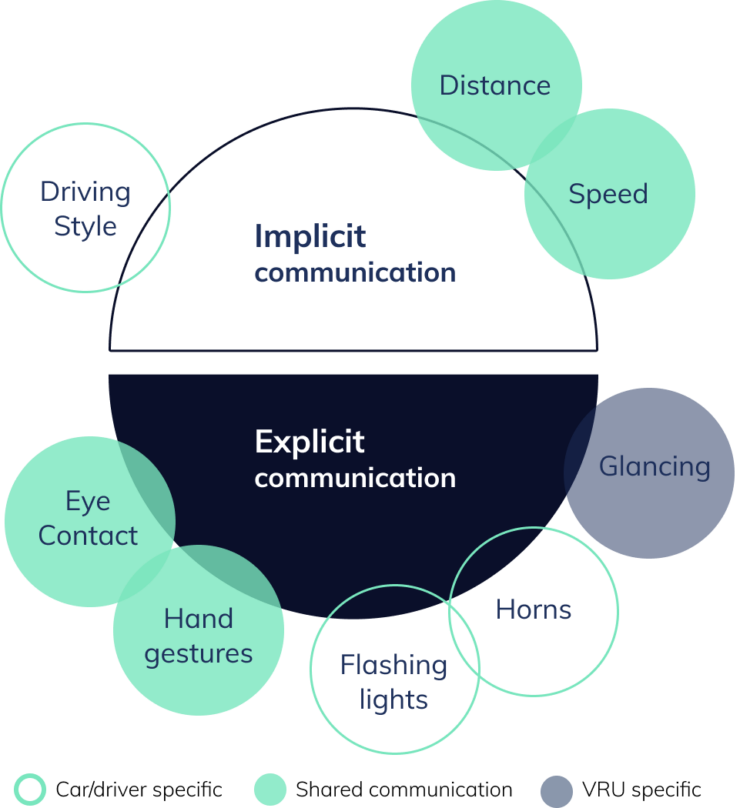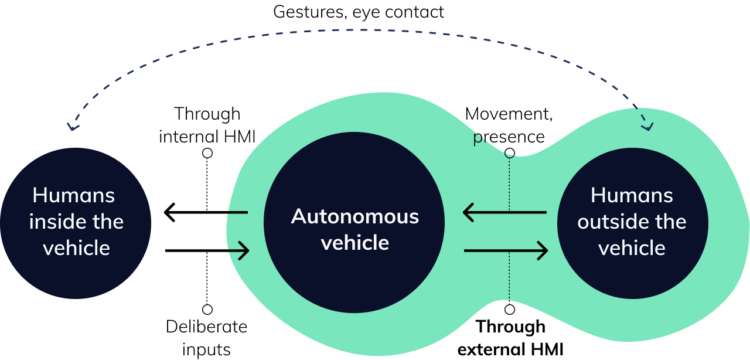Design of an external communication system for expressive automated vehicles
Oct 2021 - ongoing
The future introduction of automated vehicles in urban traffic comes with several societal benefits, but also challenges.

One of the biggest challenge is the possible problems or critical situations caused by the lack of interpersonal communication between drivers and vulnerable road users in the form of eye contact or hand gestures.
To solve this problem, external Human-Machine Interfaces seem to be a suitable solution to enable AV-VRU communication. This project reviews relevant literature on eHMI design and Human-Robot interaction to identify current knowledge gaps. Moreover, generative user research was used to identify the needs and wants of vulnerable road users when interacting with motorized vehicles in traffic. Predictability, perception of vehicle’s awareness, and knowing how to act around automated vehicles were found to be key elements for smooth interactions in scenarios that were considered critical by research participants, namely crossings without traffic lights and being passed by vehicles that share the road with cyclists.

In order to approach the problem, an iterative design process was followed to identify the best communication modalities and modes to be included in a final flexible and multimodal eHMI design, showing the potential of abstract light patterns and dynamic projections to enable AV transparency. The final design was evaluated through a video-based experiment in which participants were exposed to a baseline condition and the same scenario with the addition of the eHMI. This evaluation showed an improvement in the experience qualities evaluated in the presence of the eHMI designed, showing overall desirability and pointing out simplicity and flexibility as crucial qualities to design external communication systems.

(Report available in the repository)